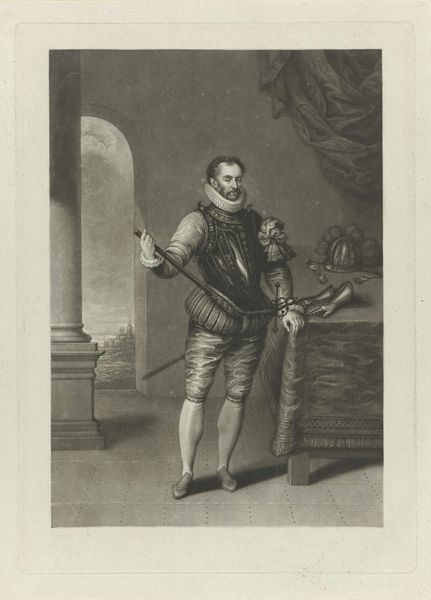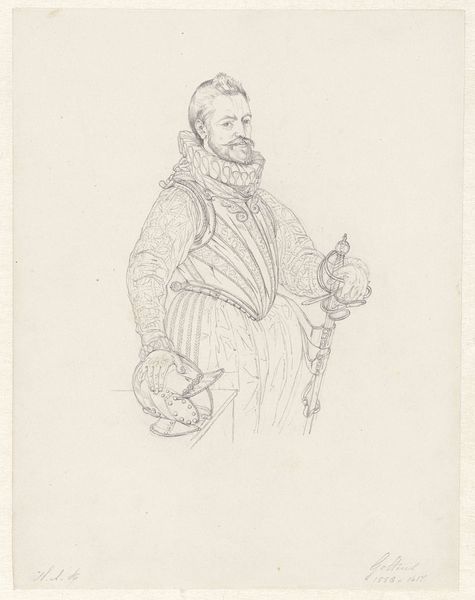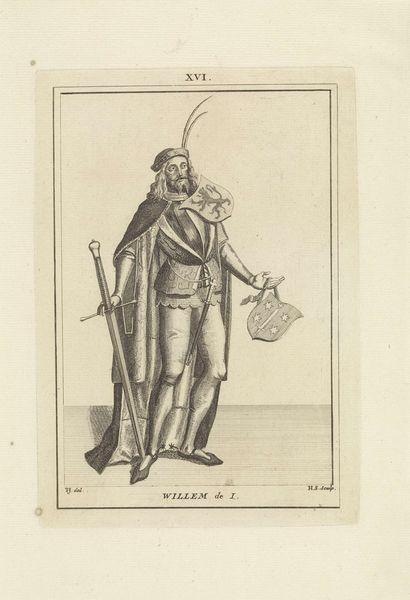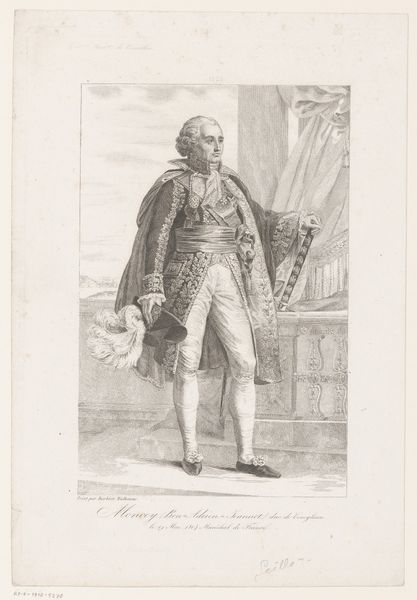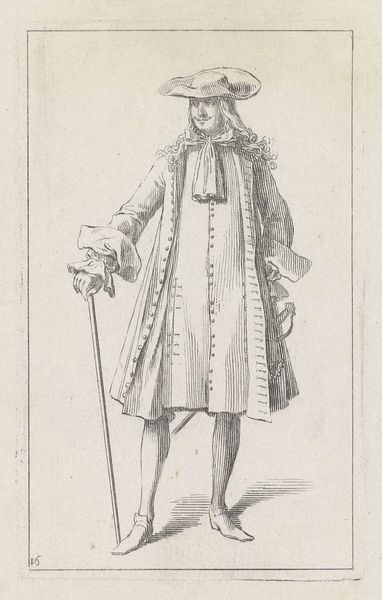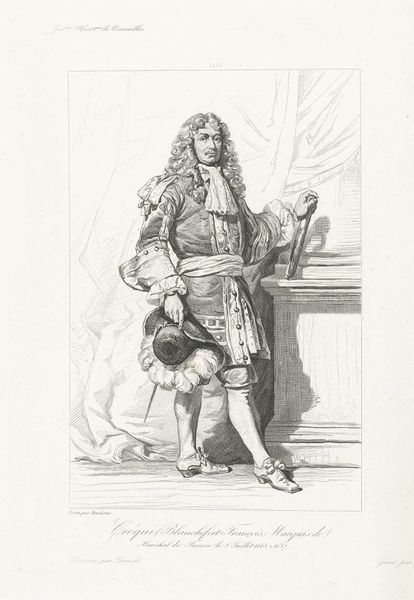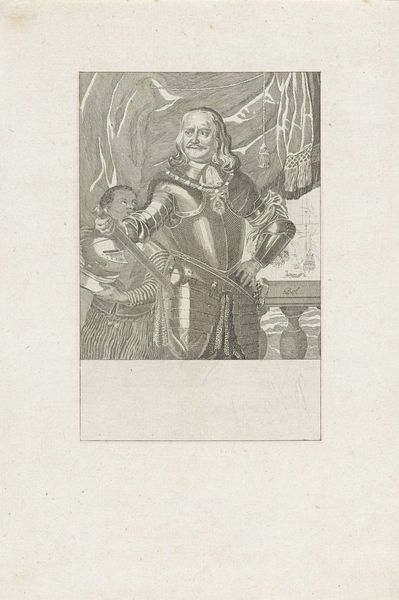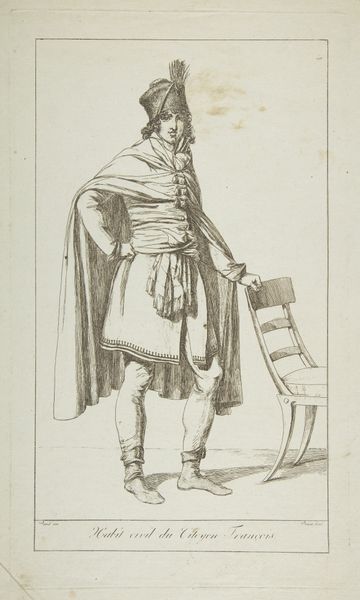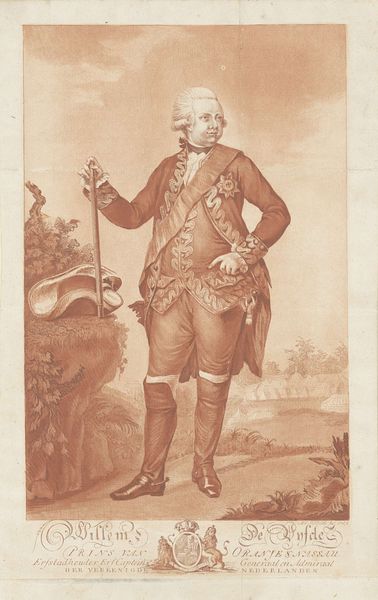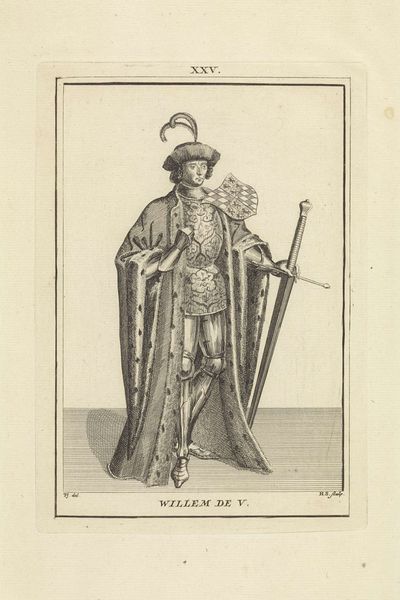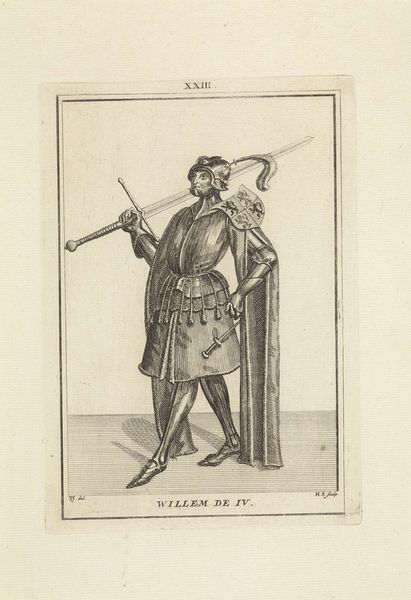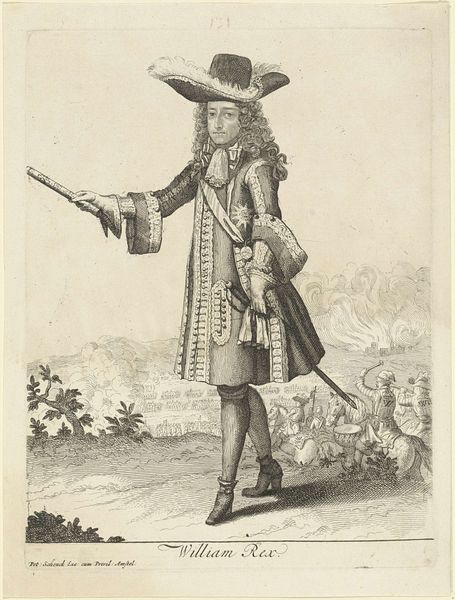
Dimensions: height 367 mm, width 265 mm
Copyright: Rijks Museum: Open Domain
Editor: Here we have Charles Turner’s engraving, “Portret van Willem I, prins van Oranje,” created around 1814. The detail is really striking for a print. What’s your read on this work? Curator: Observe the linearity employed. It establishes not only the contours of the figure but also its mass and volume. The delicate cross-hatching builds depth, yet the emphasis remains on line as the primary formal element. Consider also the composition: The subject’s stance, the angle of the sword, and the draped fabric all create a dynamic interplay. Editor: Yes, the cross-hatching does create a certain depth. So, is it primarily about the relationship between lines and form? Curator: Precisely. How the artist manipulates line to generate texture, define space, and delineate form constitutes the essence of this piece. It moves beyond mere representation, becoming an exercise in the capabilities of the engraving medium itself. Note also how light and shadow are rendered purely through the density and direction of these lines. Editor: I see what you mean. It's almost like he's showing off what the engraving technique can do. Would you consider the space behind the subject, defined only by a sketched column, to add or detract? Curator: The ambiguity of the setting prompts us to concentrate further on the figure and his attire, creating another relationship. How would you say that contributes to its effectiveness as an object for the eye? Editor: Thinking about the print's technical accomplishment and the visual composition really gives me a new appreciation for the image. Thanks. Curator: Indeed. It is through this analytical scrutiny that we uncover the aesthetic logic driving the creation of art.
Comments
No comments
Be the first to comment and join the conversation on the ultimate creative platform.
